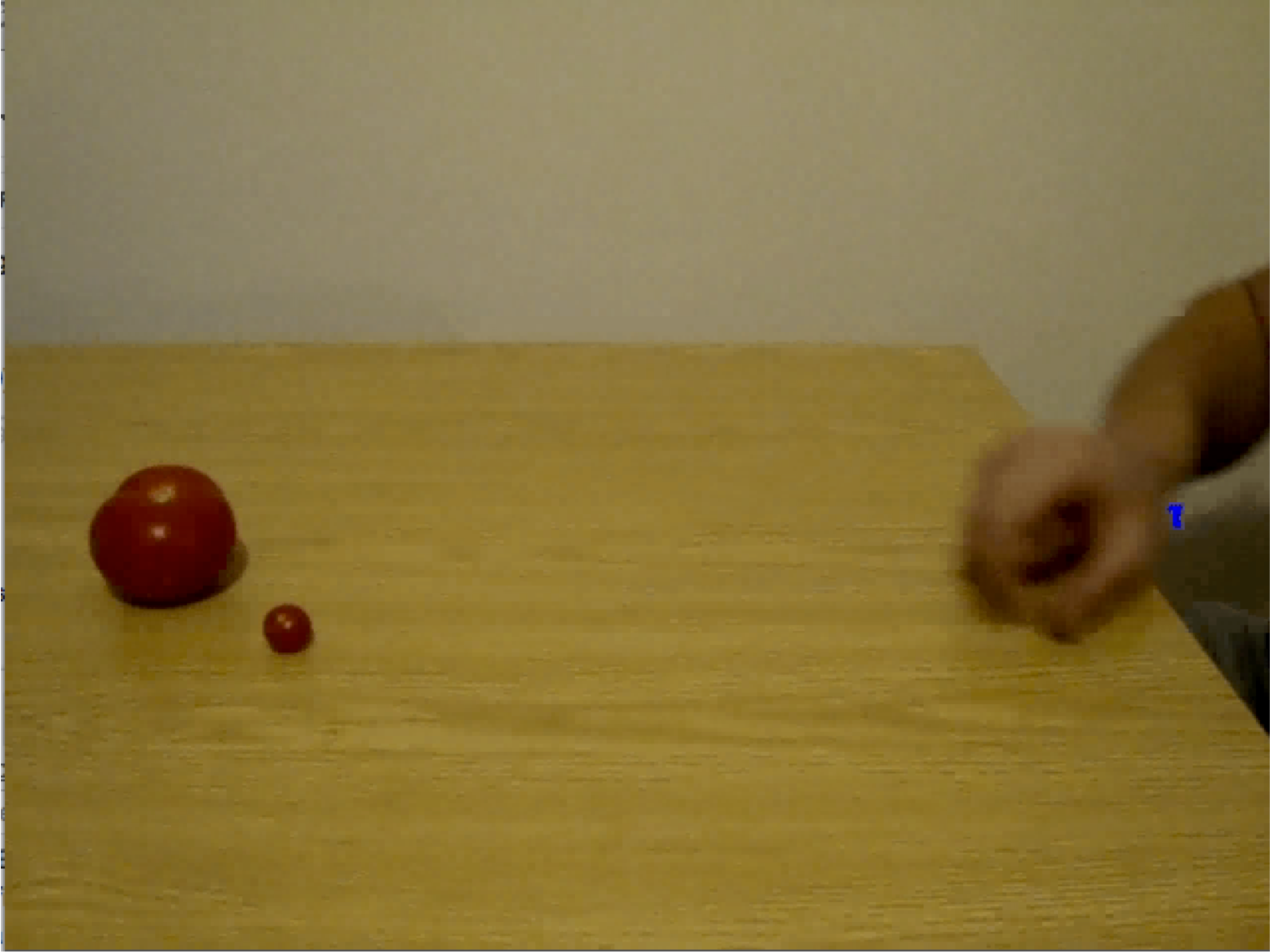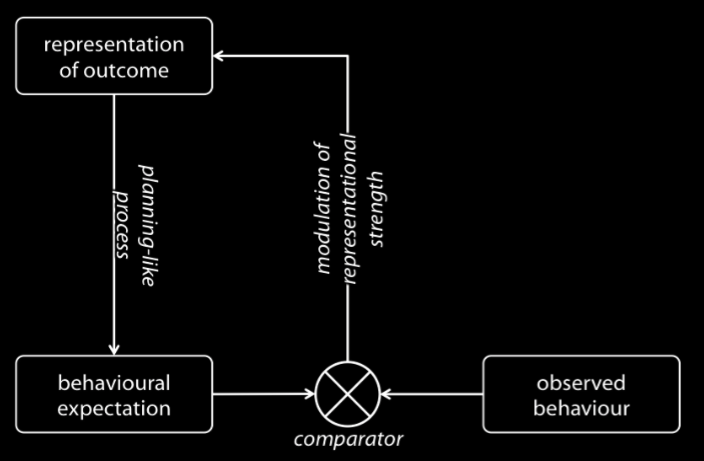Click here and press the right key for the next slide (or swipe left)
also ...
Press the left key to go backwards (or swipe right)
Press n to toggle whether notes are shown (or add '?notes' to the url before the #)
Press m or double tap to slide thumbnails (menu)
Press ? at any time to show the keyboard shortcuts
Action Observation by Adults

Flanagan and Johansson, 2003 figure 1 (part)

Costantini et al, 2012
How?
Motor representations ocurring in action observation sometimes facilitate the identification of goals.
The Motor Theory of Goal Ascription:
goal ascription is acting in reverse
-- in action observation, possible outcomes of observed actions are represented
-- these representations trigger planning as if performing actions directed to the outcomes
-- such planning generates predictions
-- a triggering representation is weakened if its predictions fail

Sinigalia & Butterfill 2015, figure 1
How?
Motor representations ocurring in action observation sometimes facilitate the identification of goals.
1. computational description
-- What is the thing for and how does it achieve this?
2. representations and algorithms
-- How are the inputs and outputs represented, and how is the transformation accomplished?
3. hardware implementation
-- How are the representations and algorithms physically realised?
Marr (1992, 22ff)
‘an action can be explained by a goal state if, and only if, it is seen as the most justifiable action towards that goal state that is available within the constraints of reality’
Csibra & Gergely, 1998 p. 255
1. Consider goals to which the action might be directed.
2. For each goal, determine how justifiable the observed actions are as a means to achieving that goal.
3. Ascribe the goal with the highest rationality score.
1. computational description
-- What is the thing for and how does it achieve this?
2. representations and algorithms
-- How are the inputs and outputs represented, and how is the transformation accomplished?
3. hardware implementation
-- How are the representations and algorithms physically realised?
Marr (1992, 22ff)
Adults
- Proactive gaze indicates fast goal ascription.
- The Teleological Stance provides a computational description of the goal ascription underpinning adults’ proactive gaze
- Proactive gaze depends on motor processes and representations: the Motor Theory provides an account of the representations and algorithms.
Infants
- Proactive gaze (from ~12 months) and violation-of-expectations (from ~3 months) indicate goal ascription.
- The Teleological Stance ...
- Two conjectures about algorithms and representations ...